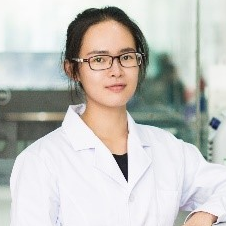Antioxidants in Fruits and Vegetables
A special issue of Antioxidants (ISSN 2076-3921). This special issue belongs to the section "Health Outcomes of Antioxidants and Oxidative Stress".
Deadline for manuscript submissions: closed (30 July 2022) | Viewed by 61555
Special Issue Editors
Interests: chemistry of polyphenols; anthocyanins; phytochemicals; analytical chemistry
Special Issues, Collections and Topics in MDPI journals
Interests: chemical alterations of phytochemicals and bioactive components as a result of breeding; post-harvest process or processing; developing analytical methods for identifying and quantifying target secondary plant metabolites for biological significance; substances of nutritional food quality significance and safety related to chronic diseases; food quality assurance, Phytochemicals, chemical alteration, food processing, health benefit, chronic disease
Special Issue Information
Dear Colleagues,
A vast amount of epidemiologic evidence has shown that increased consumption of fruits and vegetables is associated with a lower risk of chronic diseases such as cancer, diabetes, neurodegenerative diseases, and cardiovascular diseases, among others. These health benefits are believed to be associated with the presence of antioxidants, which protect the cells and their structures against oxidative damage. Over the last few decades, numerous studies have focused on the health-promoting properties of fruit and vegetable antioxidants, together with dietary fiber, vitamins, antioxidant enzymes, as well as phytochemicals, among them polyphenols, glucosinolates, and carotenoids. Studies have shown that consumption of fruits and vegetables containing large amounts of non-vitamin low-molecular-weight antioxidants, such as polyphenols and anthocyanins, might contribute much more to the reduction of free-radical processes than previously thought. The effects of health promotion and reduction of diseases risk may be attributed not only to the effect of individual antioxidants but may also result from the synergistic effects of several different compounds (antioxidant and others) present in fruits and vegetables. Additionally, various emerging processing techniques and operations, as well as complex food matrices might alter the stability, bio-accessibility, and bioavailability of antioxidants from fruits and vegetables.
We invite you to submit your latest research findings or review articles to this Special Issue, which will bring together current research concerning antioxidants in fruits and vegetables and the key role that antioxidants play in oxidative stress modulation, gut microbiota regulation, and chronic disease interruption.
Dr. M. Monica Giusti
Dr. Pu Jing
Dr. Fei Lao
Guest Editors
Manuscript Submission Information
Manuscripts should be submitted online at www.mdpi.com by registering and logging in to this website. Once you are registered, click here to go to the submission form. Manuscripts can be submitted until the deadline. All submissions that pass pre-check are peer-reviewed. Accepted papers will be published continuously in the journal (as soon as accepted) and will be listed together on the special issue website. Research articles, review articles as well as short communications are invited. For planned papers, a title and short abstract (about 100 words) can be sent to the Editorial Office for announcement on this website.
Submitted manuscripts should not have been published previously, nor be under consideration for publication elsewhere (except conference proceedings papers). All manuscripts are thoroughly refereed through a single-blind peer-review process. A guide for authors and other relevant information for submission of manuscripts is available on the Instructions for Authors page. Antioxidants is an international peer-reviewed open access monthly journal published by MDPI.
Please visit the Instructions for Authors page before submitting a manuscript. The Article Processing Charge (APC) for publication in this open access journal is 2900 CHF (Swiss Francs). Submitted papers should be well formatted and use good English. Authors may use MDPI's English editing service prior to publication or during author revisions.
Keywords
- Antioxidant
- Botanical foods
- Oxidative stress
- Chronic disease
- Molecular interaction
- Health-promoting
- Gut microbiota








